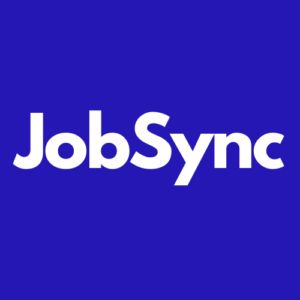
Native Applies are a tasty proposition. Done properly, they allow job seekers to start and complete an entire application on their preferred job site without clicking off, which applicants love. At the same time, they capture all of the custom screening questions, EEO questions, data permissions, and everything else a recruiter and company needs on the backend, which recruiters love.
That’s the good news.
But like many things, the devil is in the details. To make Native Apply work, you have to have some kind of communication connection between the job platform where the application is made and the recruiter. The default choice is to email the completed application which, by definition, is not scalable. Companies that rely on it quickly find they don’t have the capacity to process hundreds of emailed applications and then have to manually input all of that data into their Applicant Tracking Systems.
A better solution is integration, where the completed application moves directly from the job board or job site platform into the employer’s Applicant Tracking System (ATS), so it’s in the right place and ready for action.
The problem is, integration, like so many terms in our industry, has come to mean so many things that it almost doesn’t mean anything – as this article explains.
The Good: Removes hours of manual work
Several Applicant Tracking Systems have built standard integrations to lift a completed application from the major job board or job site platforms (Indeed, ZipRecruiter, etc) and drop it into the ATS. This is great for recruiters, as you don’t have to manually transfer data from emails or download and import applicant lists into your ATS to move them through the hiring process. You just publish a job. Anyone who applies through the job board or job site automatically gets added and tagged in the ATS, so you can see who has applied, when, and from where.
Third-party integrations do something similar, using the smarts of a third-party system behind the scenes. These tools come in various shapes and sizes but they’re fundamentally focused on moving data from point A (job board/ job site) to point B (ATS) and are better than manual data entry for sure.
The Bad: Information is standardized to the lowest common denominator
Every company using a job board or job site or an ATS has a different recruiting workflow. Some hire for one job, others hire for many. Some need proof of qualifications, others don’t. Some need the job ad to go out in French as well as English…you get the idea. Your company is unique and you do things differently to everyone else. And that is just the job content, the application has even greater variability.
However, ATS-built integrations and third-party vendors are fixed, rigid solutions. They need to work for as many customers as possible – repeatedly and at scale – and that means they are standardized to solve the problems that most companies have. These may not be the problems you have, because the vendors of these solutions don’t know what you are up against.
This creates a bunch of problems downstream.
The first thing is that we notice with standard integrations the focus is on data that is common to the largest volume of employers and disregard the rest. What is the least amount of information that has to be integrated to call the integration successful? Usually, that will be the candidate’s first name, last name, phone number, email address, and possibly their resume, but very little besides.
If that sounds like a bare-bones Easy Apply integration, it’s because it is. The integration has mapped to the job board’s application process, not yours. Yes, you’ll receive candidate data directly into your ATS. But the system is not designed to handle your custom requirements, and that means the information you receive is not nearly enough to screen candidates and figure out if they’re qualified for your job, leaving recruiters no choice but to either manually fill the gaps where the integration fell short or ask the candidate to reapply for the job on the career site.
In fact, depending on your ATS set up, you may get the candidate data dropped into the CRM part of your ATS, not the jobs part. More manual work is needed to direct the candidate to the best next step in your recruiting funnel.
The Ugly: Works for the few not the many
If you are one of the few companies whose application requirements perfectly and completely align with that of the fixed integration, great! You’ll get a smooth and efficient flow of vetted applications into your ATS.
If you are in the majority of companies and have any complexity whatsoever in your application process, the process is going to be quirky at best and broken or illegal at worst.
Such as where, when the applicant hit “continue” on the application, six pages flashed in front of them before they got to the next question. Those pages were all blank, but the integration couldn’t handle blank pages. So, the applicant ended up sitting there, watching the platform flash at them and unsure whether they should hit the back button or if they had done something wrong. We have no idea whether applicants abandoned their applications at that point, but we can guess.
Another version we’ve seen works extremely well … as long as the applicant has never applied for a job at your company before. If they have, then their application goes into limbo because the integration cannot distinguish between a new application and an existing one. Recruiters don’t get to hear about this application until it’s too late, by which time a potentially great applicant has gone elsewhere.
And in the most extreme cases, candidates aren’t presented any of the qualifying questions, EEO, or OFCCP questions, and the ‘lead’ is dropped into the ATS as an application. When the internal teams audit for the EEO-1 or OFCCP reports, the data isn’t complete.
The 80/20 rule is in full effect here.
May the odds be ever in your favor.
Companies need customization!
Hopefully, you can see by now that the value of integration is proportional to the depth of integration. The power comes from being able to customize the technology and set the rules based on the unique needs of your recruiting teams. This means the ideal solution will:
Get answers to your custom questions while optimizing the applicant experience.
Deliver complete applications directly to the “jobs” area of the ATS so the information is immediately actionable.
Route every applicant to the right place in your recruiting workflow automatically, such as sending an application to the hiring manager for the location they applied for or sending them a text to schedule an interview – saving even more time.
JobSync does all of this and more. It ensures that completed applications, real compliant applications, get to the right place while being comprehensive in the information they include, giving applicants and recruiters the experience they deserve. Speed, ease, and efficiency matter in recruiting. If you are settling for an integration that just scratches the surface, you are missing a trick.


